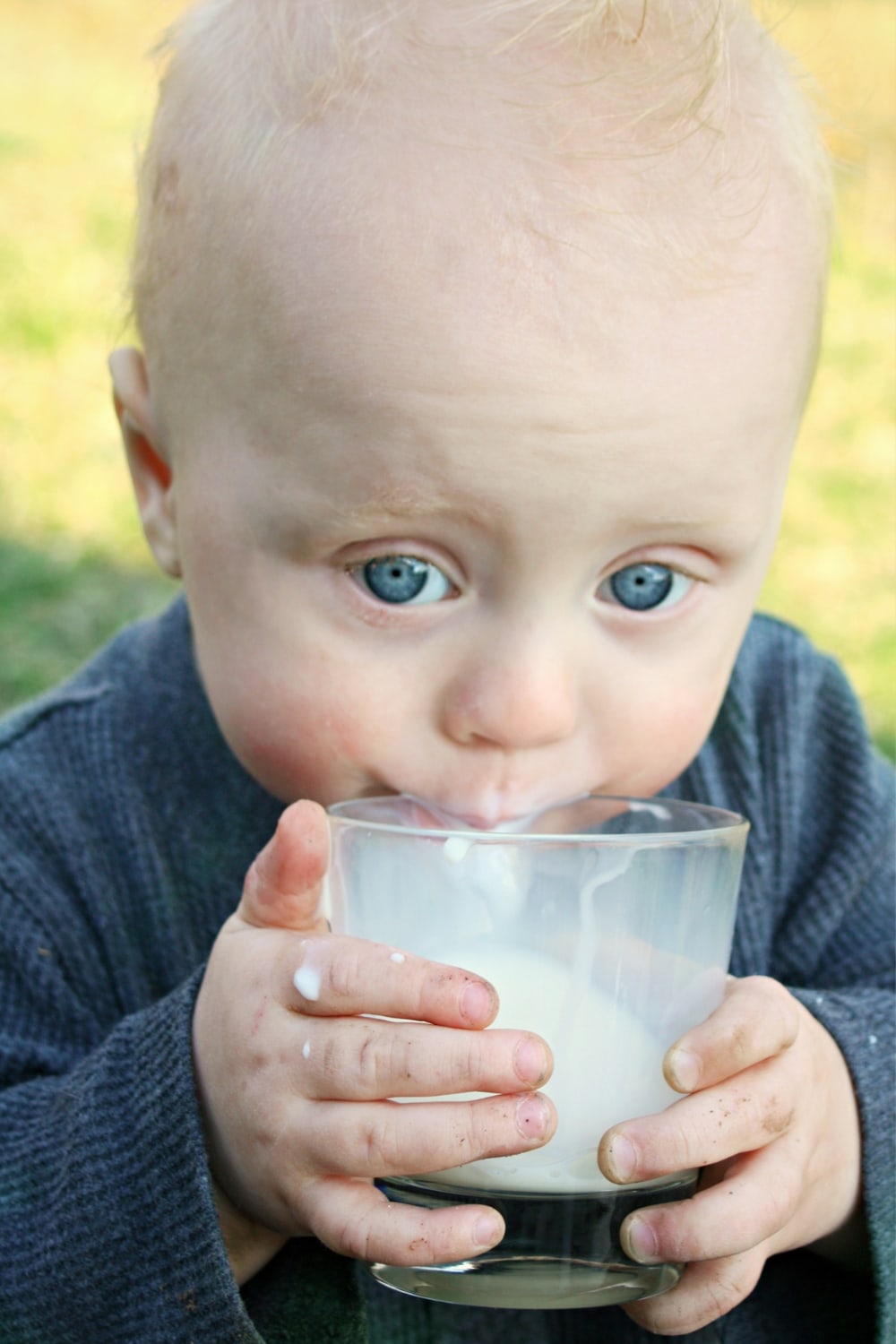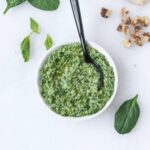Introducing milk to babies who are breastfeeding or drinking formula may seem tricky, but fear not, it's easy! Here is everything you need to know about introducing cow's milk to your baby, including when, how, and how much is appropriate.

When your little one is starting solids, cow's milk and other dairy is an important category to introduce, since it's recommended to introduce allergens early and often for the potential to reduce food allergies. Dairy is also a key source of several important nutrients, including protein, calcium, vitamin D, and B vitamins. However, giving cow's milk should be done in the right way in order to maximize the nutrition baby gets from his diet. Here's what you need to know about introducing milk to babies and how to do it confidently.
Jump to:
When Can Babies Have Milk?
Short answer: Babies can have milk when they are ready start solids in small quantities. They can drink milk instead of breastmilk or formula starting at 12 months of age. I wrote a separate article on the topic if you want to dive deeper.
Read More: When Can Babies Have Cow's Milk
What Kind Of Milk Is Best?
For babies under two years, whole cow's milk is best. Little ones need the high calories and fat in whole milk for their rapidly developing brains and bodies. After two years, some recommend switching to reduced fat milk, however, low fat milk doesn't seem to reduce childhood obesity, so if your family likes whole milk, continue drinking that.
I recommend avoiding milk substitutes such as almond milk or other plant-based milks unless absolutely necessary. They are usually severely lacking in nutrition and high in additives, and should only be considered when baby has a Cow's Milk Protein Allergy. Lactose intolerance is easily managed with lactose-free milk and introducing other dairy products.
How Much Milk Should My Child Drink?
Before baby's first birthday, he should not be drinking cow's milk, or any other milk besides breastmilk or formula, as a beverage.
After 12 months, cow's milk should be limited to 2 cups (16 oz or 500 ml) per day. This is so that milk doesn't push other nutritious foods out of the diet. While milk is nutrient dense, it doesn't provide all of the nutrients your child needs.
How To Introduce Cow's Milk To Babies at 6 Months
When your baby is starting solids but under 12 months of age, introduce cow's milk by cooking with milk in foods he is already eating. You can use milk in oatmeal or other baby cereal, pancakes, baby muffins, and more. This will be easier to do early on if you're using a baby led weaning approach, but you can also incorporate milk into pureed foods if you're spoon feeding.
You can also offer other dairy foods as part of baby's meals, such as plain yogurt or cheese (just be sure you serve it in a safe way!). These are especially good options for babies with lactose intolerance, as Greek yogurt and cheese are low in lactose.

How To Introduce Milk as a Beverage at 12 Months
After baby's first birthday, you can start giving cow's milk as a beverage in a cup. If you're still giving breastmilk, you can wait until you've completely weaned from it before giving cow's milk. If you were already giving water in a cup, simply swap it out for milk at one or two meals in the day. (If you weren't already, this is a great time to introduce drinking from a straw cup, sippy cup, or practice with an open cup!)
I don't recommend letting your child walk around with a cup of milk all day. It's hard to tell how much he is drinking this way, and it also will reduce appetite at mealtimes - which we don't want!
If your child is rejecting cow's milk in a cup, there are a couple of options to help acceptability:
- Offer milk at room temperature or gently warm it. If your child is used to warm breastmilk, this may be a more acceptable way for him to drink cow's milk.
- Add just a little bit of cow's milk to water, and slowly increase the proportion of milk over time. This can help your child slowly get used to drinking cow's milk from a cup if he is rejecting the taste of cow's milk in favor of water. You can also do this with breastmilk and slowly reduce the amount of breastmilk until you're offering 100% cow's milk.
What If My Child Doesn't Drink Much Milk?
If your child doesn't like milk, is allergic to cow's milk, or simply doesn't drink a whole lot, don't stress too much! While milk is a great source of several nutrient, it is not absolutely necessary. You should pay special attention to other foods to ensure your child is getting enough protein, fat, calcium and vitamin D, though. Protein and fat is typically pretty easy if your child eats meat or fish. Sources of calcium include yogurt and cheese, broccoli and other leafy greens, tofu and almond butter. Vitamin D is less common in foods and is mainly found in fatty fish like salmon, eggs, and some mushrooms. In some cases, you may need to supplement vitamin D via drops, which is common for babies and kids.

Find this post helpful? Please share it by pinning to Pinterest!

















Leave a Reply